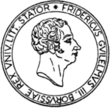Paul Osipow was born in Kymi, Finland, in 1939, and today lives in Järvenpää. In the mid-1960s no one would have thought that he had a future as a concrete artist. He was just one of a host of others of his generation who were inspired by the 1964 pop-art-exhibition in the Moderna Museet in Stockholm. In his first concrete art picture, which was entitled „Striptease„, he took his selfimposed restraint to an extreme. For him, this non-painting, this empty canvas, embodied the highest degree of potential possibilities. It was his wish to create something that was as close as possible to „nothing„. In this, he anticipated the pinnacle of the development in that direction, and in this respect, his concrete art is subject to no dogma nor any finalizing intention. In his works of art we find that the pictorial form is always in contact with the real surface of the canvas.
In the 1970s Osipow was inspired by Barnett Newman, and space as well as colour began to play a decisive role. Osipow began experimenting with colours and became much freer and more detached. His serial works demonstrate a characteristic and distinctive style, a conspicuous, and perhaps particularly appealing, feature of Osipows work in the contrast between the clearly constructed composition and the visible strokes of the brush. Although he bases his paintings on a relatively simple geometric structure, he places particular emphasis on colours within this framework. Thus, even though many of his paintings have a similar structural composition, their varying colour combinations lead to very different impressions on the viewer. His experiments show that colour influences structure decisively, but that, on the other hand, structure cannot be treated without at the same time considering colour, as some structures positively demand certain colours or colour combinations while others are totally incompatible with them.
Thus one can observe with Osipow’s paintings, that large pictures with structurally restrained compositions are more effective with clear, pure colour surfaces, while pictures with many subdivided coloured areas benefit from secondary and mixed colours.
This painting by Paul Osipow, which is part of the Collection Arithmeum, was painted after a visit of the artist in the museum. The basic structure of his composition shown here reminds one of two overlapping St. Andrew’s crosses. It captivates one within its colours. In this picture he places a mat and roughly structured pale-green against a dull and evenly applied olive-green. The rhombus in the right center is painted in a blue-tone that correponds with the intensity and brightness of the green colour. The bright-blue rectangle in the center appears like a counterpoint to the restrained and warm character of the whole composition. Consequently, towards the observer, the painting seems to be vigorous and tense.






